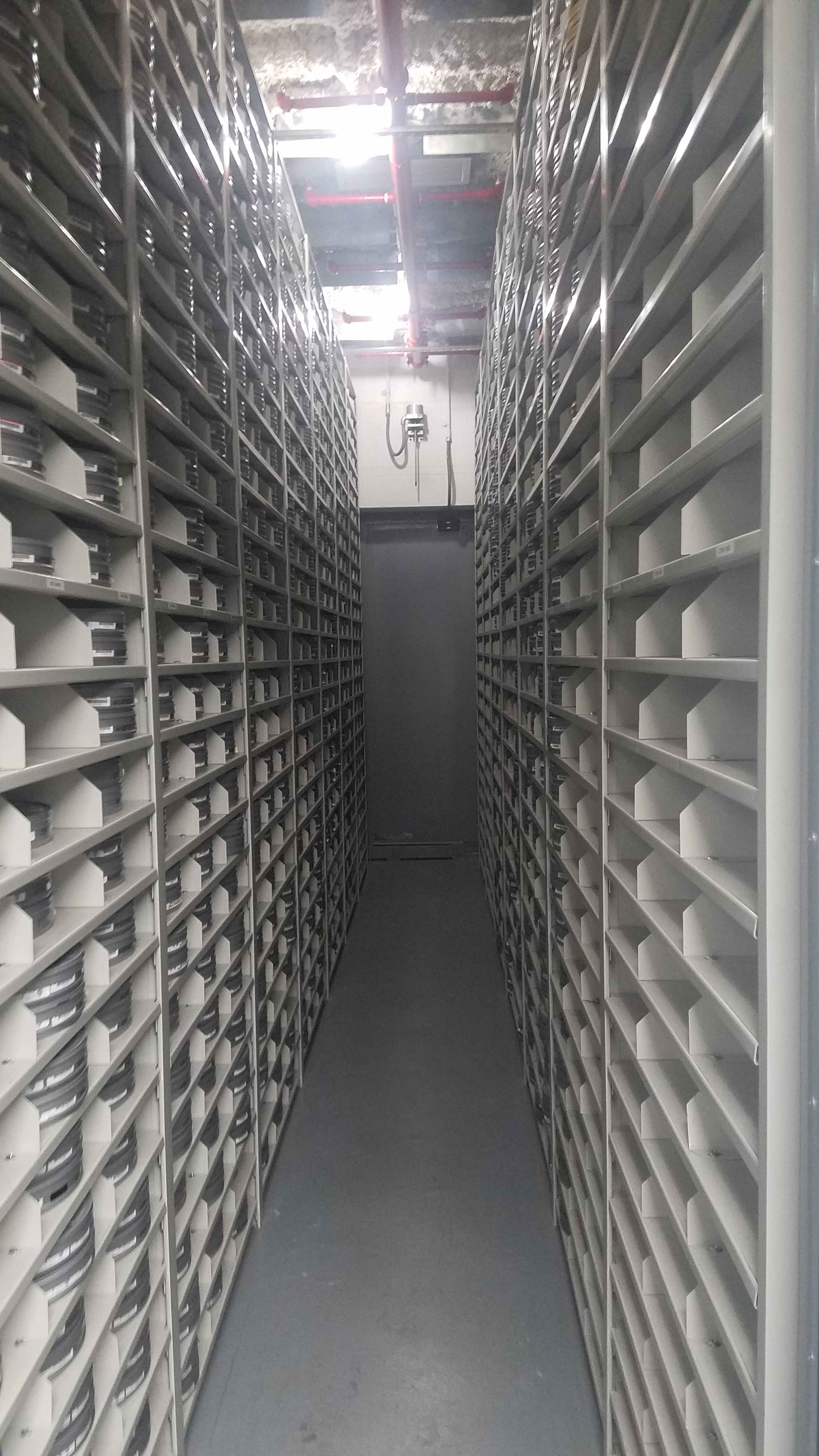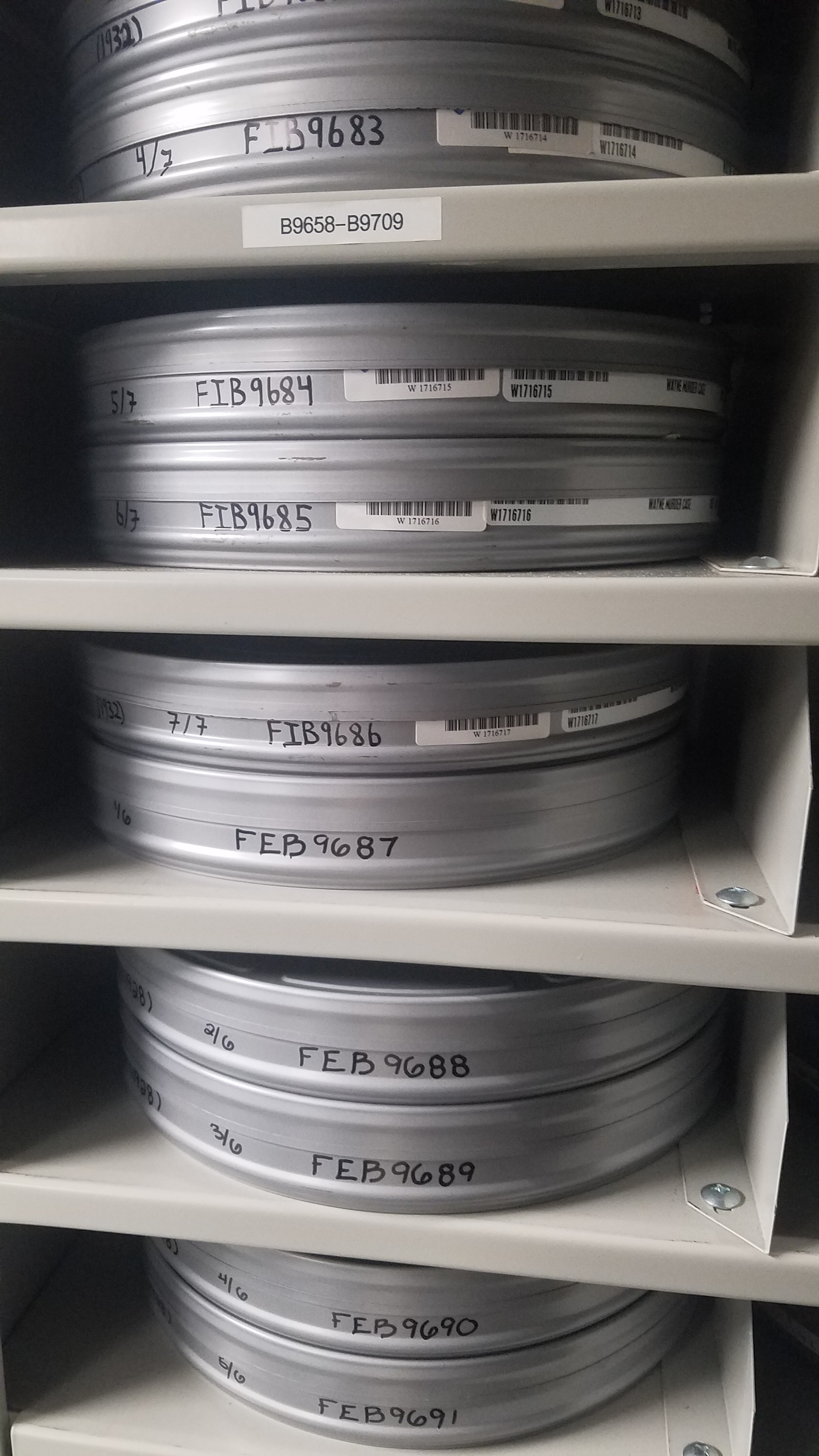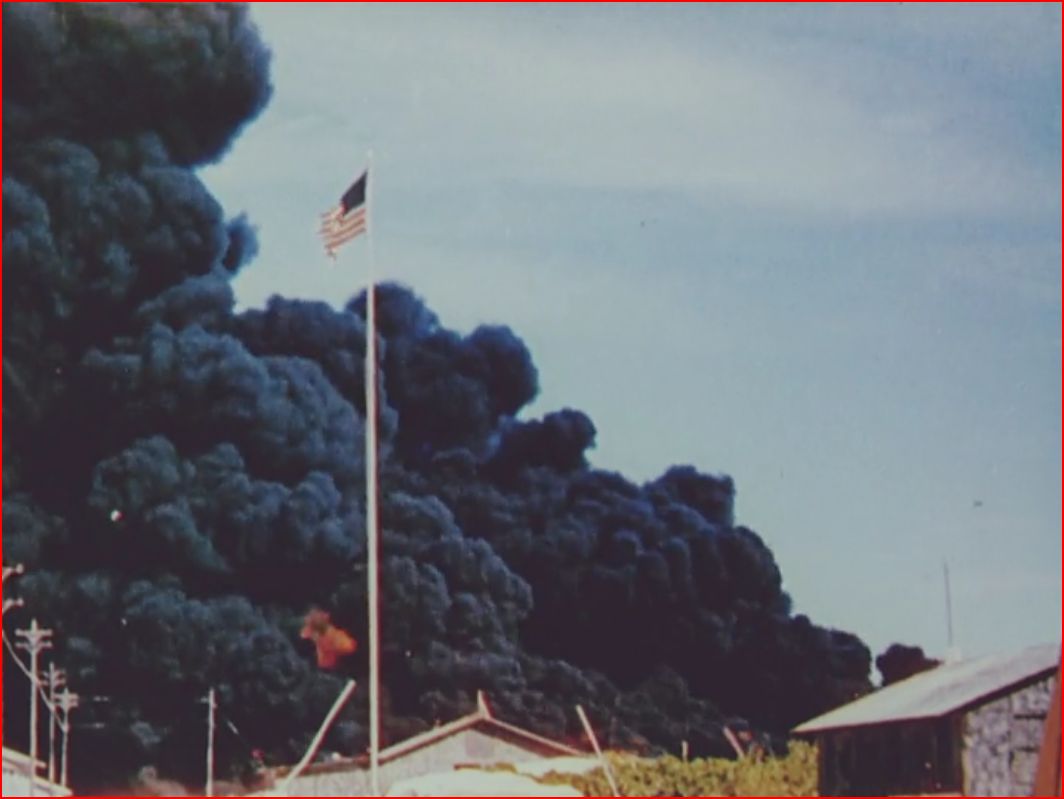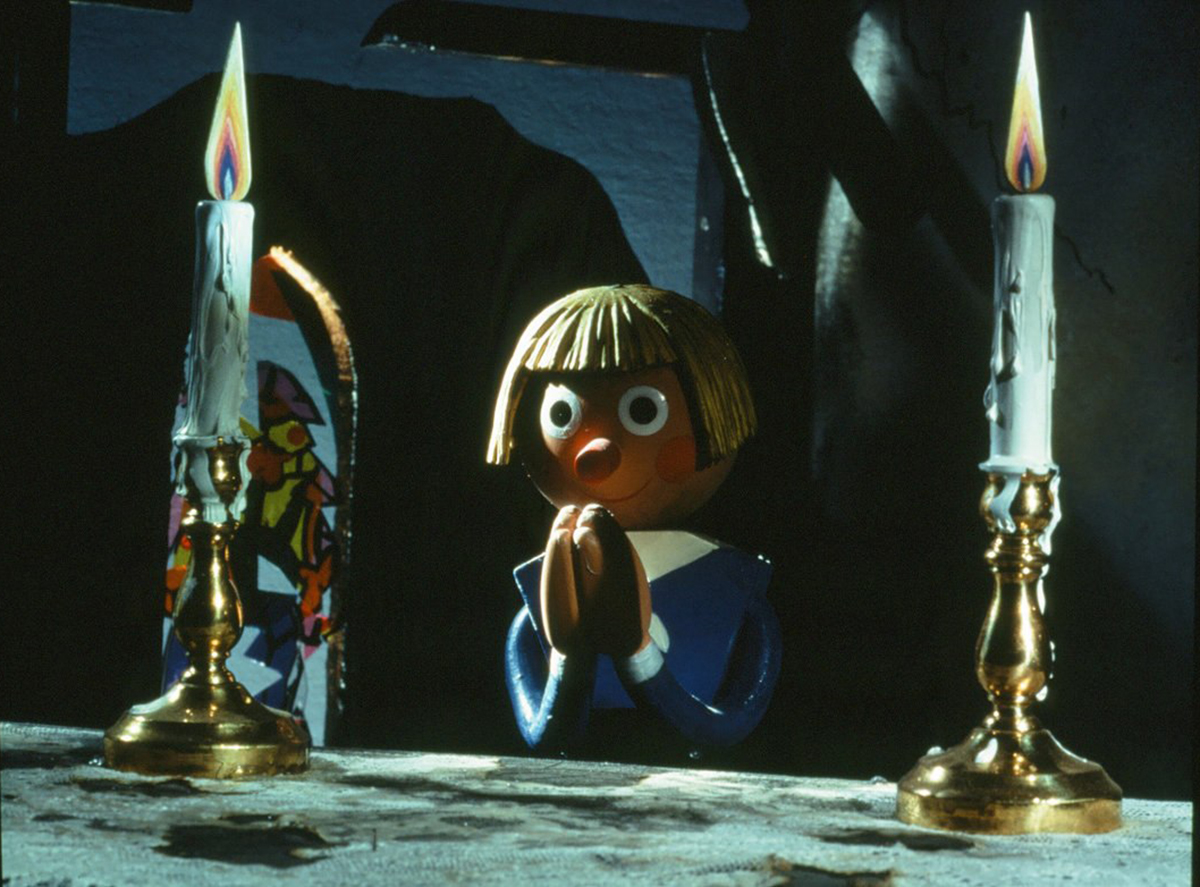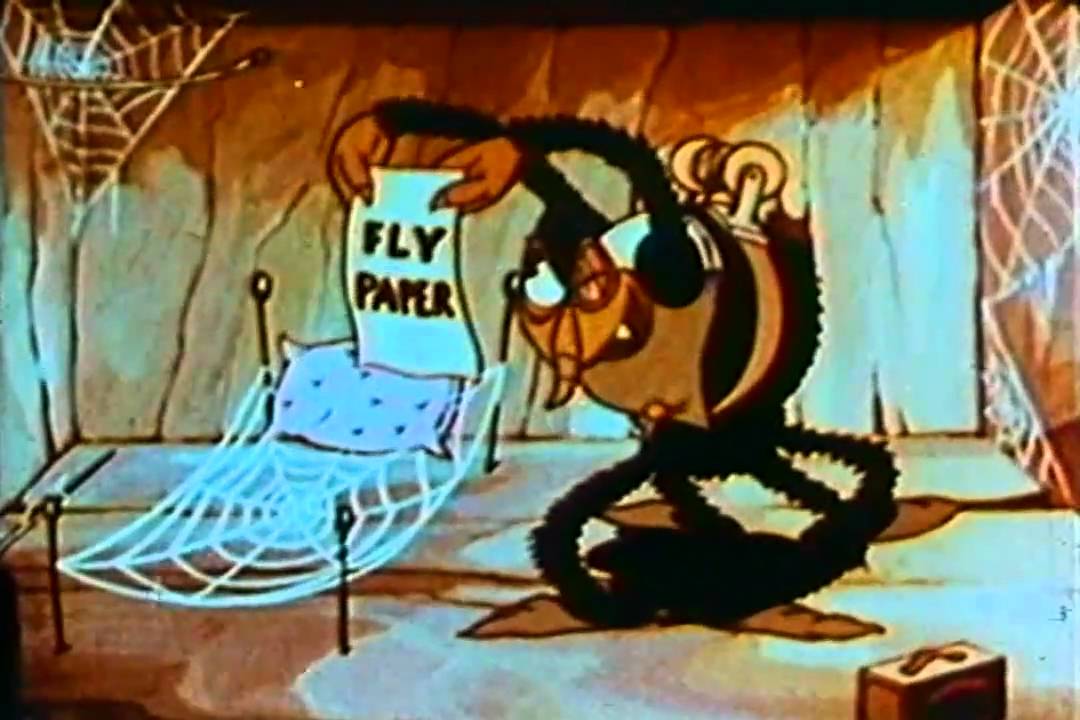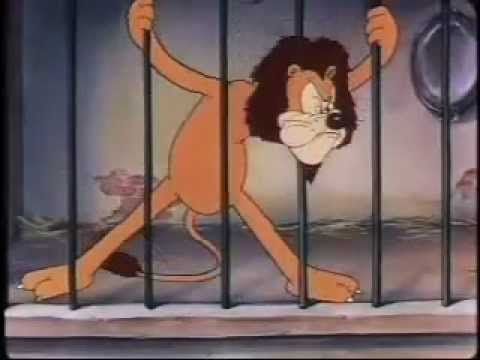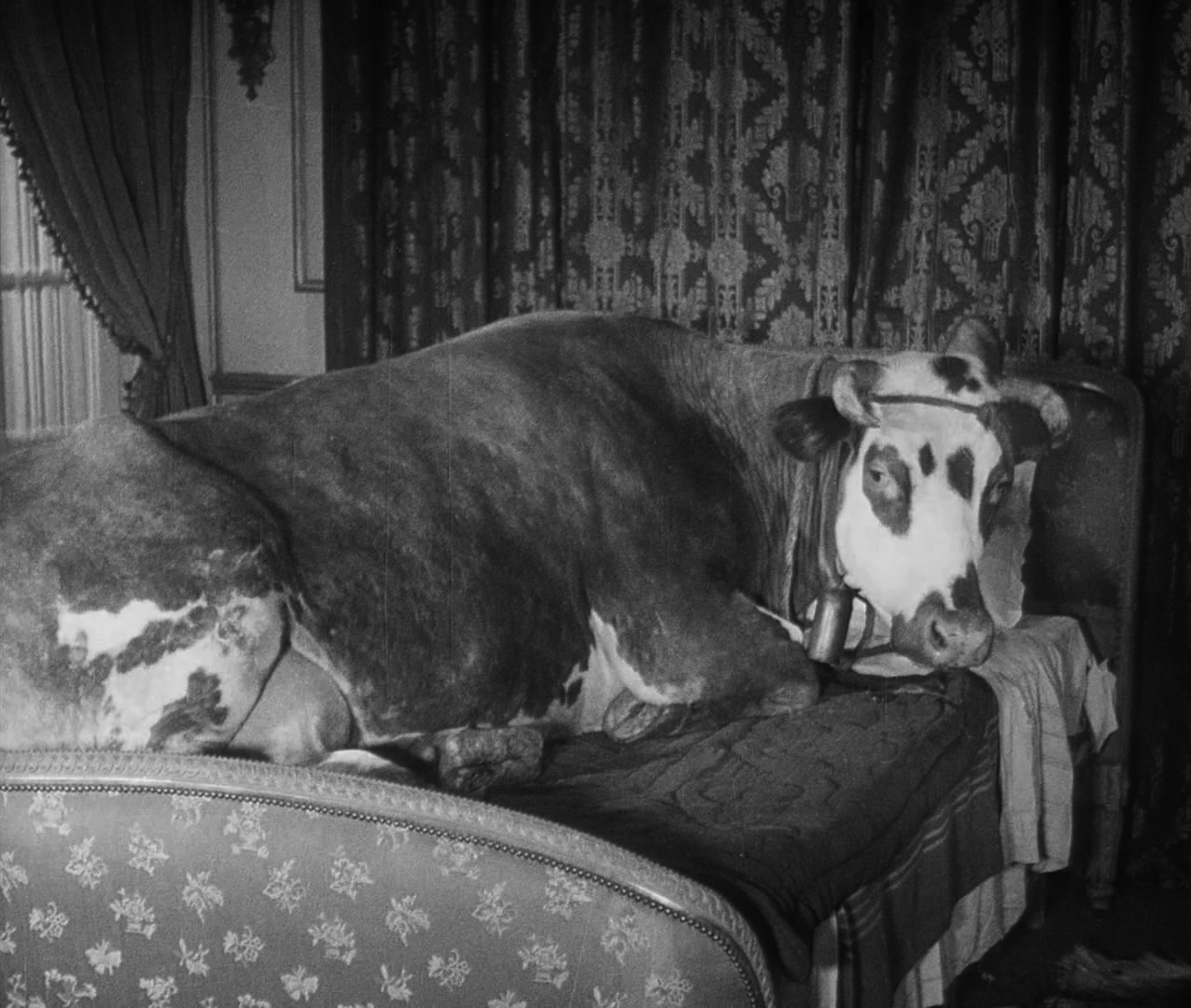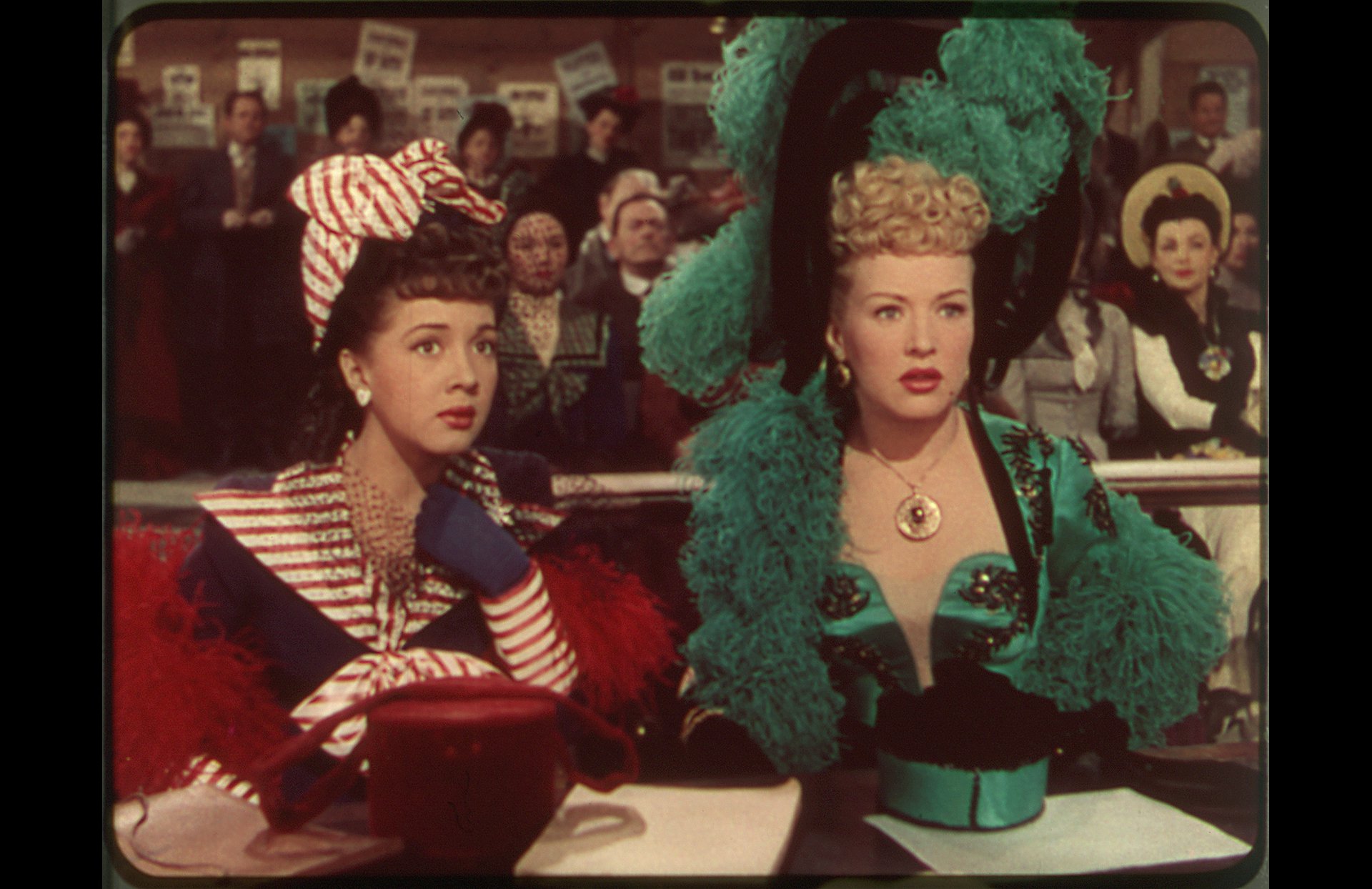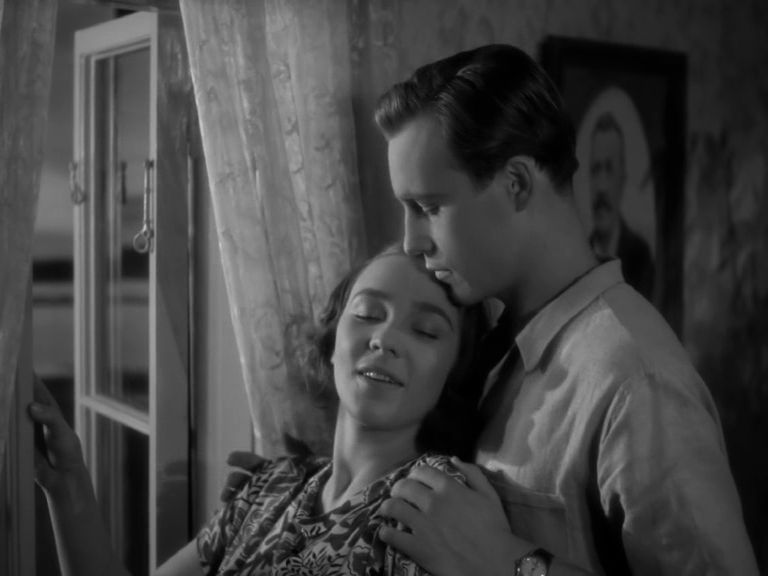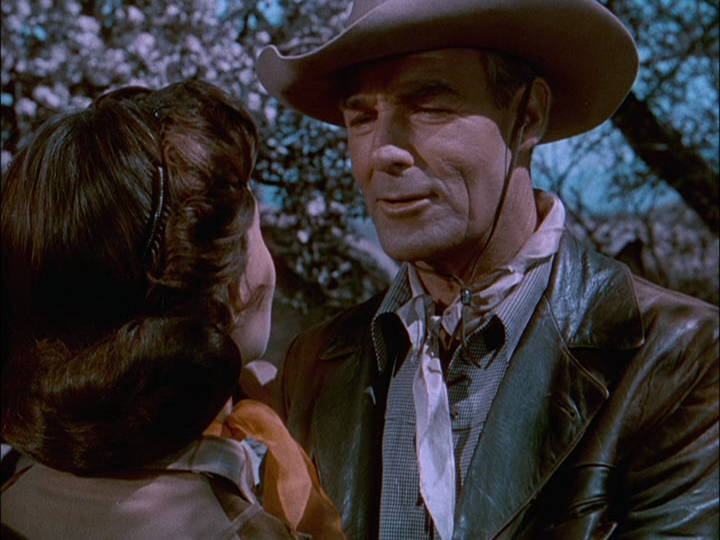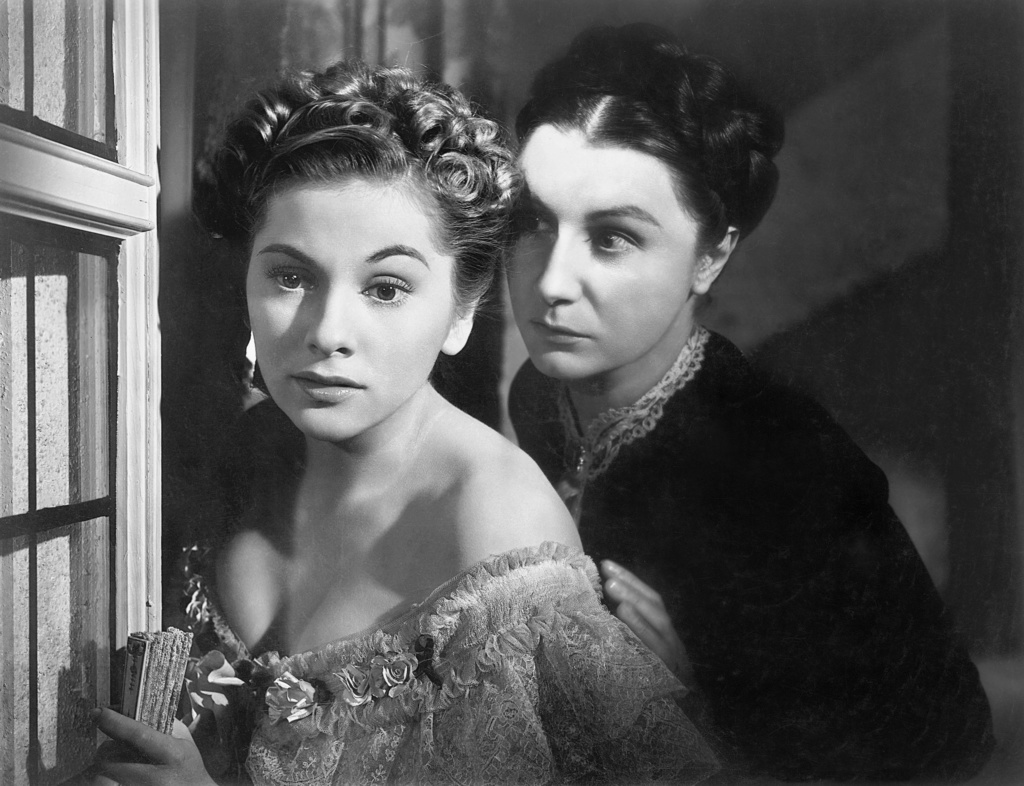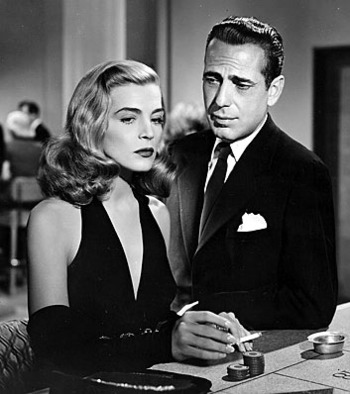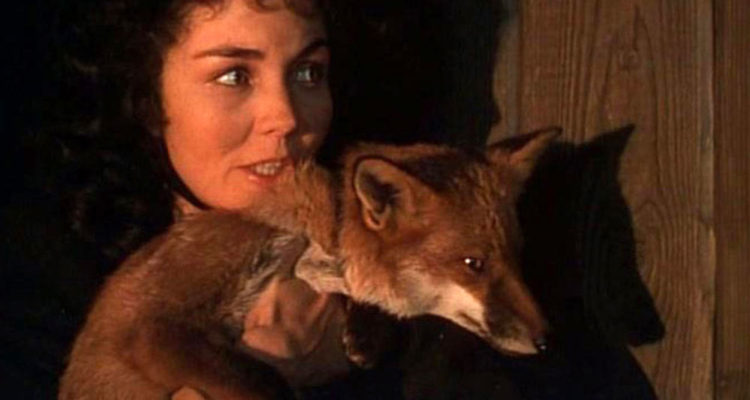Festival Coverage by Lydia Creech and Miranda Barnewall
For three days in May, the 5th annual Nitrate Picture Show, the world’s first festival of film conservation, screened 9 shorts and 9 features at the Dryden Theater at the George Eastman Museum in Rochester, NY, all from nitrate film prints. Nitrate film was the first kind of stock used for motion pictures, beginning in 1889 and going until 1951, when safety stock on an acetate base was introduced. Lydia and Miranda were able to catch all of the screenings, in addition to attending lectures and tours of the Eastman’s preservation facilities.
LYDIA: I think it’s important to talk about the how and why of this festival’s particular emphasis on film conservation. Unlike other fests we’ve covered for the site, there are no new and upcoming features (the most recent films to screen were from 1950). Rather, this festival is a celebration and acknowledgement that almost half of our cinematic heritage began life on nitrate film. This was my first time attending, but you’re an old hat at this, Miranda. What does the Nitrate Picture Show’s dedication to showcasing preservation mean to you?
MIRANDA: As a film archivist, I really appreciate the festival’s emphasizing the unique qualities of each print screened. In the program for each film, there is a brief description of that particular print’s physical condition, whether there is scratching or the print contains numerous splices. The condition of the print can tell a story about its history. Just as any object on display in a museum, that print has a history of how it got to where it is today, and putting the print into context can make it even all the more special.
Another crucial aspect that cannot go unnoticed is the skill of the projectionists. Successfully projecting a film takes incredible amount of care and focus that not many people have anymore. One of my favorite parts of the festival is giving the huge round of applause for the projectionists at the beginning of each screening, because, without them, this festival wouldn’t happen.
L: To further the educational goals of the fest, there are several opportunities to take behind-the-scenes tours and see the work that the staff at the Eastman Museum do to care for their collections. I was most excited to get a chance to check out the nitrate vaults. Because of nitrate’s notorious inflammable (or “flammable”--it is SO STUPID those words mean the same thing) quality, you can’t just store it any old way.
This is the one of 12 nitrate vaults storing 24,000 reels of films at the Louis B. Mayer Conservation Center, and a look at the cubbies in the shelving. To minimize possible damage in the event of a “nitrate emergency” (we don’t like the “F” word), only two films are stored together at a time, the idea being that only those will go, and the shelves are about 3 feet apart (this is based on testing done by the Museum of Modern Art, who determined that’s how far a nitrate fire shoots out). There are also blowout doors at the back of the vault, designed to let the fire out that way should it grow. The temperature of the vaults is kept extremely low (around 40°F) and the humidity held at around 30%. What I love about film as a medium is that if you treat it right, and store it under optimal conditions, you can still get an image off of it in 100, 200, maybe 500 years.
Any details I’ve left out, Miranda?
M: I think you’ve pretty much covered it!
I quite enjoyed the two speakers they hosted this year. The first speaker, David Walsh, was trained as a chemist and began working at the Imperial War Museum in the 1975 to study nitrate decomposition. Mr. Walsh is one of the nitrate skeptics, not necessarily believing it’s the nitrate film that causes the difference in look, but rather because the print is closer to the original generation than later safety stock prints. Additionally, archival prints are often made working with already degraded materials, done cheaply on a need-to basis, not to mention we found out later that safety stock has its own set of preservation problems.
L: I loved David Walsh’s talk. The great thing about these old-school archivists is the very blasé attitude they have towards nitrate, and the way they stand witness to how far the field has come (punching holes in nitrate film to test it??). Walsh’s argument that nitrate stocks don’t look better just because they’re nitrate does seem an odd one to make at a festival celebrating nitrate, but I appreciate his anti-sensationalizing, grounded perspective. Also, he was just so funny and self-depreciating.
The other speaker was Elaine Burrows, who also has a long history in the field, having held numerous positions at London’s National Film Archive. Her talk also focused on how the archival field’s perspective on nitrate has changed over years, from the rush to change everything over to safety stock by 2000 (the “Nitrate Won’t Wait!” campaign), to the acceptance and changing of best practices regarding keeping nitrate (no more hole punching, for one). Mostly I appreciated her pointing to The Film Prayer read by Keanu Reeves on YouTube and her home footage of setting nitrate on fire (man, what is it about archivists and the need to set stuff on fire?).
“What I was aware of was not that it was nitrate… but that it was from 1885… in my hands a direct link to the past.”
Short Films
L: Moving on to some of the actual screenings, the highlight of the festival for me was the very first programming block, which was the shorts. This is a wonderful way to kick the screenings off, because it really does highlight that nitrate was used for everything. There were cartoons (including a Frank Tashlin), travelogue films, short docs, and, my favorite of the lot, a WWII propaganda film and the festival’s first John Ford, The Battle of Midway.
M: I always look forward to the shorts screening, as well. It’s such a variety of films that I would probably never see. I hadn’t seen Battle of Midway, but I recall you telling me about it and Five Came Back during the festival. Could you elaborate on that?
L: Now, Battle of Midway is available on Netflix (and other WWII propaganda films that they made available in conjunction with their Five Came Back documentary), but seeing it projected on the big screen (in fact, probably a print that was projected to contemporary audiences of the day) was actually extremely affecting. I hate to admit it, but as a piece of propaganda, I felt it working on me. Some of it is hokey (voiceovers….) but the Sousa marches and the absolutely apocalyptic imagery of black smoke rising into the pristine blue sky, not to mention the knowledge that when the frame jumps in the gate, that’s because the cameraman really was running away from explosions, were effective.
M: It was extremely effective; the last shot with the flag waving in the air gave me chills. My favorite of the shorts was The Temperamental Lion, I think because it was just weird? From what I gather, the lion is a caricature of the cowardly lion from The Wizard of OZ. Tulips Shall Grow was also a treat; directed by George Pal, this short tells the story of the Nazi (labeled as screwballs) takeover of Holland in WWII using puppet stop motion animation.
L: Oh my gosh, I looooove 30’s animation, the way everything kind of bounces?
M: Yes! Especially in The Temperamental Lion. The cartoons never fail to make me happy.
FEATURE FILMS
L: Of course, the main draw of the festival is the line up of classic films, as they were originally seen by audiences. The schedule is kept secret until the morning of the first day, which can be kind of frustrating, but I suppose is meant to drum up excitement.
M: I can see it both ways – on one hand you want to know what you’re going to see, on the other, it’s about the object itself. From the audience’s perspective, the question is “What film best flaunts the nitrate look?” But for the programmers, it might be “What full feature can still run through the projector?”
L: Either way, there’s only one theater so it’s not like you have scheduling conflicts. Your point about what features are still in projectable shape is very good. I wound up being totally impressed by variety of the line up! The amount of work that goes into tracking down prints from various archives is impressive. Putting this festival on requires a great deal of inter-archival cooperation--prints were sourced from across the United States (the Big Five archives for nitrate are the Academy, UCLA, MoMa, the Library of Congress, and the Eastman itself) and from international archives, notably the Swedish Film Institute (supplied Strandhugg), KAVI in Helsinki (supplied Ihmiset suviyössä), and the Austrian Film Museum (supplied The Nevadan)
M: Did you have a favorite film of the festival? Mine was Rebecca and the screen tests that followed it. I had heard great things about that print of Rebecca, which I believe was David O. Selznick’s personal print. What also made that screening special is that one of my classmates worked on the Rebecca screen tests for her personal project during our year of study at the George Eastman Museum, so it was really exciting to see the work that she did get projected.
L: The screen tests following Rebecca were such a treat. They absolutely glowed. When I saw that in the program, at first I was a bit skeptical of my interest level, but because they’re not really intended to be used beyond pre-production, the prints were in almost pristine condition. The footage of Joan Fontaine kicking the train of her dress around and looking bored (actually she was super sick that day and miserable) was a rarity.
M: There was something about knowing that those tests were only meant to be projected for studio executives and employees that made it all the more special for me. As you mentioned earlier, nitrate was used for everything, not simply feature films. And yes, Joan Fontaine was so done in those tests.
L: I have to say my favorite was Nightmare Alley. It was the first screening of the second day, and felt like jolt of adrenaline (in a messed up way). It was great showcase of gorgeous black and white noir-ish cinematography. The blacks seemed particularly deep and shadowy (helped by some amazing sinister carnival sets), and, this could be my imagination, but the textures and lines of Tyrone Power’s face as he descended further and further really stood out. Also, it had three incredible roles for its female stars (Joan Blondell, Coleen Gray, and Helen Walker). People like to think we live in a more enlightened, post-sexist world than we used to, but here we have actually layered, complex female characters, as opposed to some bullshit Girl Power™ slap-dash unmotivated throw-the-undeveloped-female-superheros-together-for-one-scene-only cash-grab.
M: Were there any films that took you out of the plot and made you think, “Oh my gosh, I’ve never seen film look like this!”
For me, the film that took me out of the story and made me aware of the physical qualities of the stock was Dead Reckoning. There was a particular medium shot of Humphrey Bogart and Lizabeth Scott smoking and the smoke looked absolutely gorgeous.
L: I absolutely adored all the Technicolor prints, including the Blind Date with Nitrate pick Gone to Earth (When we covered it for the pod, I seem to remember less than enthusiastic responses, but I was happy to get to see an Archers film, and the colors really did look nice). I know the Technicolor process results in particularly rich colors, regardless of film stock, but seeing films that have held their color for 70-80 years and look just as vibrant as the day they were stuck was amazing. There was also The Nevadan, which was the first feature film at the fest to showcase a rarer color process--Cinecolor--that a) tickled me because Western and b) was a good example of an alternative. It doesn’t quite catch the same range of tones, and due to its nature (emulsion on both sides of the film stock) is easier to damage (there were numerous nicks in the color throughout), but I was so pleased to see an example of it.
CLOSING THOUGHTS
M: As you’ve mentioned, I’ve been to this festival before and keep going back. I’m interested to know if you would go back again? What would you like to see on nitrate? Are there things you wish they would do in addition to what they do now?
L: I’ll definitely be returning, hopefully for as long as they continue to put it on. I also want to encourage others to check it out if they get a chance. I know a lot of people who get excited to catch prints on the repertory circuit (the print of Suspiria from a couple years ago comes to mind), and, to those folks, I say you ain’t seen nothin’ yet.
I’m still holding out to see the Powell and Pressburger A Matter of Life and Death on nitrate one day (mostly because it can showcase both color and black/white cinematography).
M: Ohh, that would be awesome to see!


